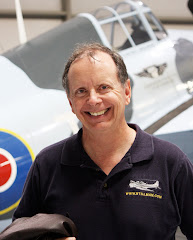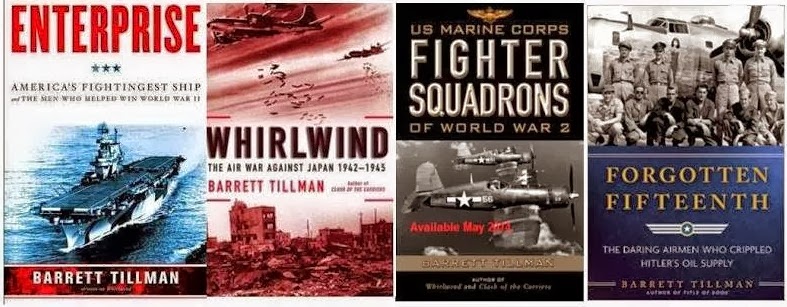Donna
Wild Foss died this month at age 100.
She was the oldest person I knew, and one of finest. The fact that she was married to aviation,
political, and sports legend Joe Foss until his death in 2003 was significant,
but also beside the point.
I
was privileged to belong to the Foss circle for about thirty-five years, and am
grateful that the relationship continues.
But during “Didi’s” memorial service in Scottsdale this week, there was
time to reflect upon her life and what she meant to so many of us.
Didi
was born in Michigan in October 1917. She
lived a full, righteous century on Earth, leaving a ton of admirers. She is survived
by her daughter Coni Foss and son Dean Hall; two
grandchildren; three great grandchildren; and a great-great grand daughter.
Joe
met Didi in 1951 when he attended a jet transition course at Williams Air Force
Base near Phoenix. As he told it, one
day the runway temperature was 146 F but he was intrigued with the visiting
tall, slender, blue-eyed manager of a local business group.
As
they say, time passed.
Nearly
eleven years later Joe and Didi’s paths crossed again. Joe described her as talented, outgoing, and
positive with a warm personality.
Accurate on all counts.
Then
in 1966 Joe began his second television program, The Outdoorsman. Didi,
already something of a TV pioneer and noted photographer, joined the
production company. By then they were
both single. The series ran nine years,
hunting and fishing on at least three continents.
In
the first season Joe was stricken with an undiagnosed malady. It was serious: “I was down to the one yard
line and the Grim Reaper was about to score.”
Joe had ingested toxic chemicals on a field trip, and Didi’s insistence
on taking him to the Mayo Clinic in Rochester, Minnesota, saved his life.
Then she saved his soul. She prayed for him constantly, passionately, successfully. Upon recovery Joe became a converted Christian and thereafter never missed a chance to witness for his faith.
Joe
and Didi married while filming in Hawaii in January 1967, and remained together
until he departed the pattern thirty-six years later, to the month. She said, “Joe does the things I can’t do; I
do the things he won’t do—and together we make a good team.”
For
all the attention Didi received as “Mrs. Joe,” I was impressed with how she
remained her own person. Probably the
most illuminating experience I had with her was a rare one to one
conversation. She asked about my career
as an author, not so much seeking advice as context. Then she said that she’d been thinking about
a book based on the wives (or spouses) of other celebrities—how they fit into
the respective communities yet retained their individuality. One of her closest friends was Jo Schirra, as
Joe was tight with astronaut Wally Schirra.
Jo and Wally were about as different as any couple I ever knew: Jo’s
reserve contrasted vividly with Wally’s extroverted Gotcha personality. But I realized that Didi was on to
something. Unfortunately, she did not
get to pursue the project but I still think it would have been insightfully
original.
Although
Joe contributed to Tom Brokaw’s 1998 best seller The Greatest Generation, Joe never bought into the hype. He said “We weren’t the greatest. We just did what we had to do.” He was right, of course—he believed that the
greatest Americans were those who founded the nation against vastly greater
odds than the Allies faced in WW II.
Yet
I still think of the “War Two” vets as The Guadalcanal Generation because that
was where Joe came to national prominence.
And, being focused on naval aviation, I knew or met dozens of other
veterans of the 1942-43 Solomons campaign when America really could have lost a
significant part of the war, however temporarily.
One
of “my” other Marine Corps aviators was Brigadier General Fritz Payne, a
fighter pilot like Joe flying F4F Wildcats.
Fritz died in 2015, age 104. I’d
not seen him in many years, as he was unable to travel, but he remains the
oldest person I ever knew. Didi was the
next oldest.
Nearly
all the WW II survivors I know anymore are well into their 90s, and a few remain
remarkably active and alert. But they’re
the exceptions.
According
to the census, in 2010 there were 131,000 centenarians in the U.S., a huge 82
percent increase in ten years (72,000 in Y2K).
The reasons needn’t concern us as much as what we can learn from our
eldest elders.
When
I think of Didi, Fritz, and their contemporaries, two things occur to me:
wisdom and patience.
Wisdom
presumably is a natural byproduct of aging.
Simply living ten decades (or five or nine) exposes us to a body of knowledge. The lessons are there for anyone who cares to
absorb them.
I
think of a survivor of Japan’s brutal Bataan Death March that killed thousands
of U.S. and Filipino troops in 1942. I
asked, “Who survived?” The veteran, then
in his seventies, said, “The lifers.
They’d been around, and they knew you can’t do everything. They learned what was important, so they had
priorities.” He added that many
youngsters, though more physically fit, lacked that wisdom. They wore themselves out trying to do it all.
Patience
is the province of age. Especially in
the 21st century when generations have grown up with—and grown accustomed to--immediate
gratification. But that’s an artificial
environment that does not reflect the reality of Planet Earth. Evolution is Patience writ huge. We humans did not rise to the top of the food
chain merely because we wanted to. It
took about 200,000 years. The Great Wall
of China required a couple of millennia.
So if attaining social progress (however it’s defined) or any other goal
seems glacial at times, perhaps it’s not.
Perhaps it’s simply Situation Normal.
Centenarians knew that, and their wisdom often was mistaken for
indifference by younger, hotter heads who arrogantly and/or naively believe
themselves equal to their elders.
So
keep that in mind, you millennials. Slow
down and take advantage of the hard-won patience and wisdom of those who’ve
seen reality and know it for what it is.
If Didi, Fritz and others are any indication—and they are—their
perspective is a screaming deal. Wisdom
of the ages. For free.



